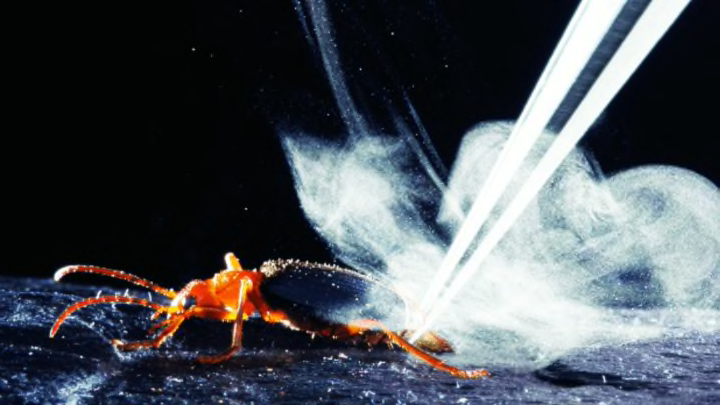Bombardier beetles share their name with Air Force crews who drop bombs for a reason. When under attack, the beetles, native to much of the world, expel a noxious jet of scalding chemicals at their enemies.
As part of a study published in Science magazine, intrepid researchers at MIT, the University of Arizona, and Brookhaven National Laboratory in New York recently used high-speed x-ray imaging to provide the first look inside the bombardier beetle’s abdomen as it ejects its toxic spray. The beetle's defensive spray comes out in powerful pulses, like a machine gun from the butt, complete with smoke.
Recorded at a rate of 2000 frames per second, the video shows how the beetles mix two chemicals in their abdomen to create benzoquinone, their defensive agent, and expel it from their body without doing any harm to themselves. The chemicals begin in separate chambers inside the beetle’s abdomen, then are released to mix together. As the chemicals combine in the beetle’s body, they heat up almost to the boiling point, creating pressure that expels the liquid out of the abdomen with heat, oxygen, and water vapor at a rate five times that of other insects that use benzoquinone as a defensive spray.
The structure of the beetle’s blast-resistant butt may one day help to design systems to protect against larger explosions than those found inside a half-inch beetle, or possibly even a new kind of propulsion. Beetle-butt-inspired rockets, here we come.
[h/t: Eurekalert]
